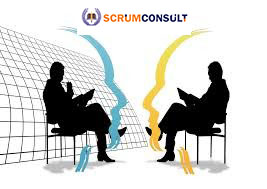The Product Development Lifecycle is a structured approach to bringing a product from an idea to market and managing it through its lifecycle. This process ensures that products are developed efficiently, meet customer needs, and achieve business goals. Here’s an overview of the stages typically involved in the product development lifecycle:
### 1. *Idea Generation and Screening*
– *Idea Generation:* Gathering ideas from various sources such as customer feedback, market research, brainstorming sessions, competitor analysis, and internal stakeholders.
– *Idea Screening:* Evaluating ideas to identify those with the most potential, considering factors like feasibility, market demand, alignment with business goals, and available resources.
### 2. *Concept Development and Testing*
– *Concept Development:* Developing selected ideas into detailed product concepts. This includes defining the target market, value proposition, key features, and differentiators.
– *Concept Testing:* Testing the product concept with potential customers through surveys, focus groups, or prototypes to gather feedback and validate assumptions.
### 3. *Business Analysis*
– *Market Analysis:* Conducting in-depth market research to understand market size, growth potential, competition, and customer needs.
– *Financial Analysis:* Estimating costs, revenues, and profitability. This includes creating a business case, forecasting sales, and determining the return on investment (ROI).
– *Risk Assessment:* Identifying potential risks and developing mitigation strategies.
### 4. *Product Design and Development*
– *Requirements Gathering:* Defining detailed product requirements and specifications based on customer needs and business goals.
– *Design:* Creating design documents, including user experience (UX) and user interface (UI) designs, wireframes, and prototypes.
– *Development:* Building the product according to the design specifications. This involves software development, hardware engineering, or manufacturing, depending on the product type.
– *Iteration:* Using iterative development methods (e.g., Agile) to continuously improve the product based on feedback.
### 5. *Testing and Quality Assurance*
– *Alpha Testing:* Conducting initial testing within the development team to identify and fix major issues.
– *Beta Testing:* Releasing a beta version to a select group of external users to gather feedback and identify additional bugs.
– *Quality Assurance:* Performing thorough testing, including functional, performance, security, and usability testing, to ensure the product meets quality standards.
### 6. *Launch and Marketing*
– *Launch Planning:* Developing a go-to-market strategy, including launch timelines, marketing campaigns, sales strategies, and distribution channels.
– *Training:* Training internal teams, such as sales, customer support, and marketing, on the new product’s features and benefits.
– *Marketing Execution:* Executing marketing and promotional activities to create awareness and generate demand.
– *Product Launch:* Officially releasing the product to the market and making it available to customers.
### 7. *Post-Launch Activities*
– *Monitoring and Feedback:* Continuously monitoring product performance using analytics and customer feedback to assess success and identify areas for improvement.
– *Support and Maintenance:* Providing customer support, addressing issues, and releasing updates or patches to improve the product.
– *Iteration and Improvement:* Using feedback and performance data to make iterative improvements and add new features.
### 8. *Product Lifecycle Management*
– *Growth:* Scaling the product, entering new markets, and optimizing pricing and marketing strategies to maximize growth.
– *Maturity:* Managing the mature product, optimizing operations, and maintaining market share while exploring opportunities for differentiation.
– *Decline:* Deciding whether to phase out the product, introduce a successor, or pivot to new opportunities as market demand decreases.
Summary:
The Product Development Lifecycle is a comprehensive process that ensures a structured approach to bringing a product from idea to market. By following these stages, organizations can develop products that meet customer needs, align with business objectives, and achieve long-term success in the market.
To learn more about Scrum Master Certification in Lagos, Agile Expert, Project Management, Product Owner, Lean Six-sigma Green belt, Lean Six-sigma Black belts, SMC, PSM and CSM, kindly visit scrumconsult.com

